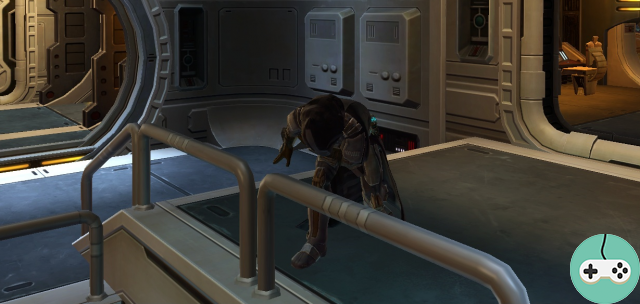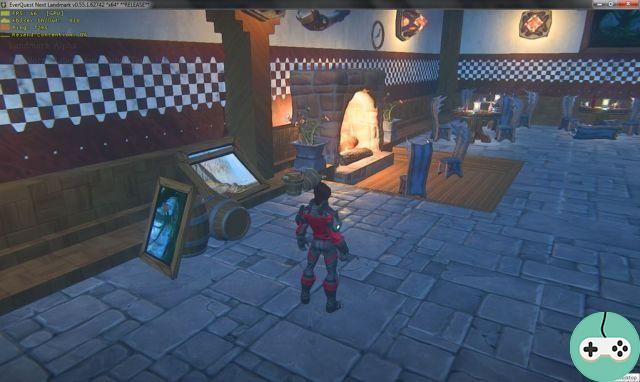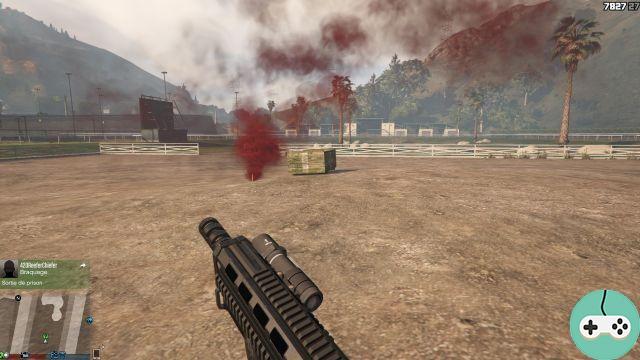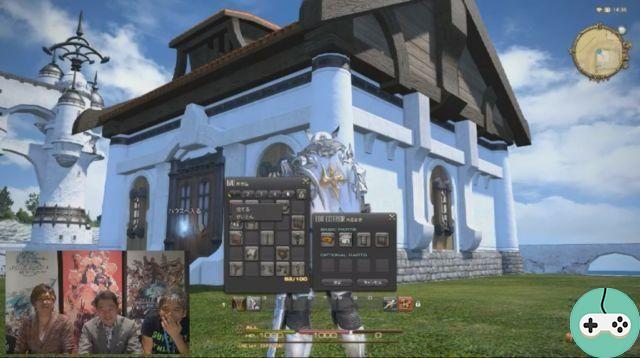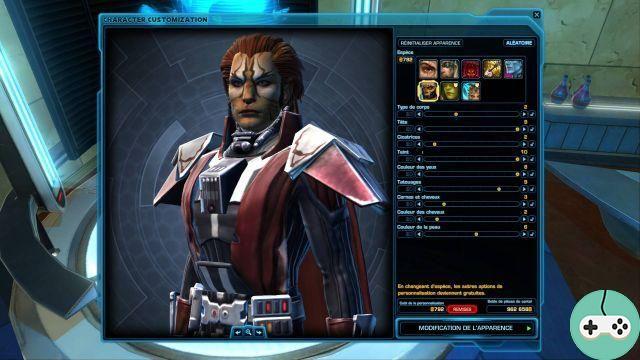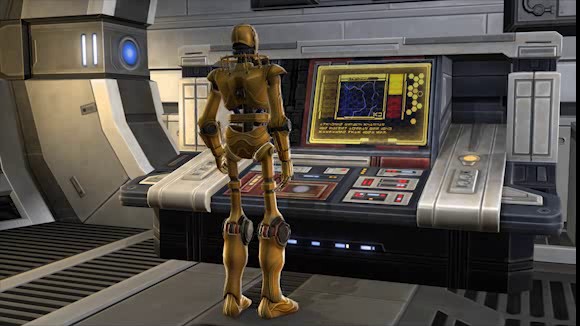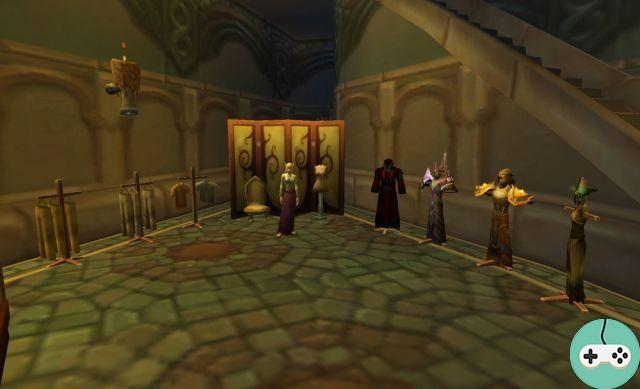

Rappel
The activities in Star Citizen are not going to be like what you find in most games today. You won't have to press a button and wait for it to happen or repeat an action over and over again without reason until you get what you want. There is also no choice of profession based on an artificial and statistical progression which increases little by little.
The goal of teams is to keep the player active by requiring reflection and dexterity to complete a task. Likewise, progression will only be achieved through the player's understanding of what he is doing and his acquired know-how.
All activities are concerned by this process, whether it is mining or going through a jump point. Some activities can be automated, but the result will be less interesting than if you do it yourself.


Context
Space is a hostile place and even seasoned pilots will sometimes have to patch up their ships. Fortunately, there are a number of options available to allow citizens to get their ships back on their feet.
Star Citizen's Repair System works in conjunction with the Deep Damage Model, to provide an intuitive and engaging gameplay experience for players looking for a career in ship repair, or for pilots looking to make quick repairs in the field.
The technology for repairs in Star Citizen is based on tools equipped with general-purpose lasers. They can remove damaged materials, or inject powdered repair elements, then agglomerate them by heating, to rebuild structures and surfaces.

Repair roles
Any repair ship needs two specialists to complete its mission: a repair arm operator and a repair planner.

The operator of the repair arm controls a robotic tool, equipped with a multi-purpose laser and a material injection system. The repair arm is capable of performing all kinds of troubleshooting. This is the only way to completely repair the structure of a ship. In addition, this task requires dexterity, knowledge and coordination with the repair planner to be performed correctly.

The Repair Planner relays accurate damage information to the boom operator, designates repairs to be undertaken, and is responsible for distributing materials needed for rebuilds.
Repair planner

To start repairs in a workshop, the repair planner must first use their damage assessment interface to obtain damage information and prepare for repairs.
Damage analysis
When using his terminal, the repair planner can access the damage diagnosis for the affected ship. This tool displays the status of the zones of the ship, the hull, the systems, the armament and their various connections. The player has the option to switch between and sort the different layers, as well as isolate and display their respective constituents.

The damage inflicted on a ship's hull is represented on a virtual reality layer, in the form of a heat map. Perfect structure is displayed in green, critical damage or holes are displayed in red, and partial damage is displayed between these two shades. Breaches are also highlighted for more visibility.
Viewing the different parts of a ship will show their current condition as well as the materials needed to repair them. When ready to begin a repair, the manager selects the part, automatically opening the material panel.
Materials panel

Repairs carried out in a workshop require raw materials, collected through mining, salvage or trade. The Repair Planner can allocate different materials based on the different repairs needed through their console's material panel.
Depending on the repairs, certain types and amounts of materials are needed. When a component is selected, these needs are displayed in the “repair needs” section of the material panel as boxes to be filled from the ship's stock.
Each material reflects its effectiveness when placed in a box, and affects the repair procedure (discussed later in the article). To achieve optimal results, the planner must find a compromise between the needs of the boom operator and the value of the materials used.
Once all the materials have been allocated, the repair arm operator can now start the rebuild process.



Reconstruction

In the event that an entire part or component of a ship has completely detached or been destroyed, it must be rebuilt. It is for this purpose that the planner selects the missing pieces from the damage assessment panel and assigns the required materials.

Once the composition is confirmed, the frame of the missing part is automatically built by the repair arm. This process is fully automatic, and uses the schemas present in the repair terminal database. Once the chassis has been rebuilt, the player can then recreate the skin normally, via the repair system.

Before a rebuild can begin, the assembly surface must be cleaned of any debris by the repair arm operator. As long as something is obstructing, the part will appear in a red hologram on the damage diagnostic panel, with the blocking parts to be removed highlighted.
Repair arm operator
Once the items have been selected and the composition of the repair materials decided through the Repair Planner, the repair arm operator begins the rebuild and repair process. With his terminal, the operator can control the position of the arm remotely via an integrated camera. To simplify controls, the head is directed and positioned directly by the operator, an integrated IK (NDT: inverse kinematics) solution calculates the movement of the rest of the arm.
The laser of the repair arm has two different modes to carry out the different operations: Stripping and Repair
Stripping
Stripping the hull is vital to improving the integrity of a lightly damaged ship, as only missing areas of the armor can be repaired.
In stripping mode, the high power laser of the repair arm removes part of the surface of a component without causing damage. The areas thus removed are converted and recovered as a percentage of their raw materials.
Stripping is also necessary when a component or part is completely torn off. Complete rebuilding of an item requires a clean attachment point, requiring the operator to remove any debris that would compromise the area.


Repairs

Repair consists of rebuilding the surface of a vessel or a component to restore its integrity. In repair mode, the arm laser is now used to “print” materials directly onto the structure of a vessel or component. Once the repair arm is in place, a wire hologram is projected, showing the boundaries of the damaged area that can be printed on. This grid is a high resolution guide that follows the contours of the surface in its intact state supporting the materials printed on the ship.
The repair arm disperses a powdered compound, heats it and binds it with its laser, creating the new surface. As this surface expands, the grid gradually contracts until the area is completely repaired.
The strength of the new surface depends on its exposure time to the laser. As it builds, its resistance gradually increases until it reaches 100%. If the laser remains pointed at this area for too long, the integrity of the surface will eventually be reduced due to overheating. The operator must therefore wait for the ideal moment to obtain maximum integrity, before moving on to the next zone.

The player can activate the augmented reality display of the color heat mapping layer of damage while making repairs. Real-time feedback is thus obtained as it approaches this equilibrium. The surface will turn green when approaching 100% and will turn red if overexposed. If the surface is indeed overexposed, then the operator will need to remove this section before attempting to repair it again.
The composition of the repair material, defined by the repair planner, will determine the behavior of the surface during printing: the maximum level of integrity, the length of the ideal heat-up period as well as the rate at which exposure affects the surface. 'integrity. A risk / reward trade-off loop is thus controlled by the player, where cheap materials can achieve the same integrity as a much more expensive component, at the cost of much greater control on the part of the operator. The crew of the repair vessel will therefore have to take into account the competence of the operators before assigning materials and making the accounts.
Field repairs
Personal MultiTool

The Multitool is a personal item, which looks like a mini version of the Workshop Repair Arm. It allows stripping and repair, offering a wide variety of troubleshooting, excluding full rebuild.
Even though the Multitool has the same functionality as the repair arm, the size of its laser and the low quality of repair materials it can store only make it useful for quick repairs and emergency tinkering while waiting. 'bring the ship to a real repair area.
Component damage
When your ship is damaged, part of this damage will be reflected from the point of impact on the hull to the nearest component (system or weaponry). This component will then share this damage between itself and its subcomponents. Subcomponents are the various consumables used to run or improve components or systems.
Typically, field repair of a component involves shutting down the component, replacing damaged subcomponents, and turning the component back on. In very large systems, such as those on capital ships, several steps to turn off or turn on a component may be necessary, such as redirecting energy or cooling to other parts of the vessel. These actions may require the use of one of the ship's onboard computers.
Subcomponents
Sub-components provide additional benefits to their parent components, allowing for further customization of the ship. They are divided into three categories, each offering specific improvements.

Racks the modules

Module racks are the panels that house the various components used to keep their subcomponents in working order. They are located on the hull behind maintenance hatches in enclosed cockpit vessels, or internally in the engineering section on larger multi-seat vessels.
Depending on the components installed, different types and numbers of subcomponents are required. Each subcomponent is designed to be easily removed and replaced, allowing emergency repairs to be made quickly. If a player attempts to remove a subcomponent from a component that is still energized, it still risks receiving an electric shock and taking damage.

Replacing a damaged subcomponent is simply a matter of interacting with it. The player will then remove it, freeing its location. If the player has a replacement in his inventory, he can interact with the free slot to place it there.
Sub-components are universal to all ships and components of the same class in terms of size. A Gladius cannon coolant bar can replace a Hornet's shield generator bar. Maximum flexibility is thus offered, allowing players to juggle different systems depending on the situation, while allowing them to patch up their ship with subcomponents collected elsewhere.

Larger vessel components, such as the Idris or the Retaliator, may require more and / or larger subcomponents. When they are damaged, the time to diagnose the fault and replace these complicated systems can be much longer. For more redundancy, these ships may contain alternate backup systems. In the event of an emergency, mechanics can use the terminals onboard the ship to redirect power to the back-up systems, allowing the ship to run at 100% while the main systems are being repaired. This can also be done manually, if an engineering terminal is down, by physically swapping the module rack to place the backup system in the primary location.






